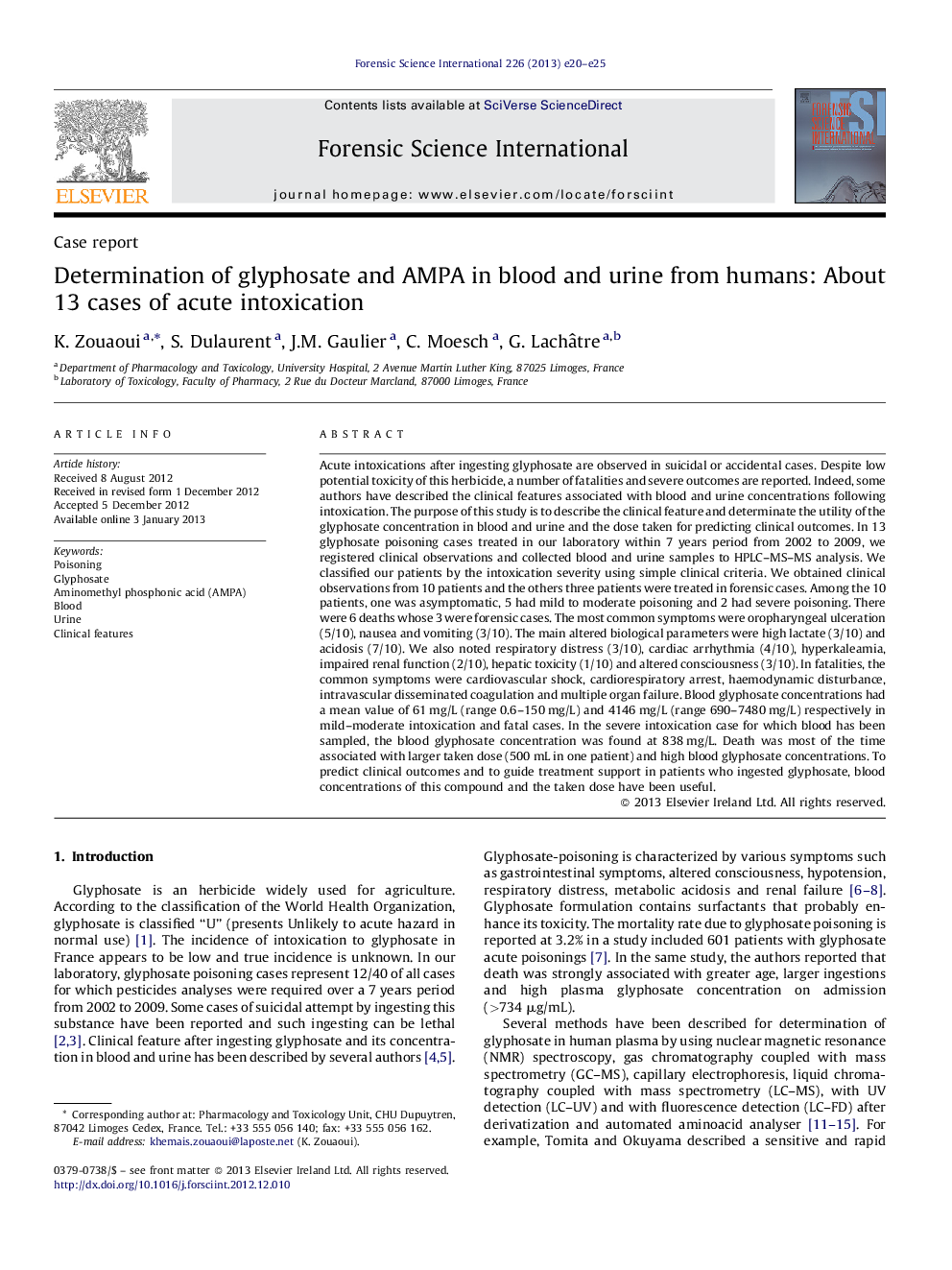| Article ID | Journal | Published Year | Pages | File Type |
|---|---|---|---|---|
| 95738 | Forensic Science International | 2013 | 6 Pages |
Acute intoxications after ingesting glyphosate are observed in suicidal or accidental cases. Despite low potential toxicity of this herbicide, a number of fatalities and severe outcomes are reported. Indeed, some authors have described the clinical features associated with blood and urine concentrations following intoxication. The purpose of this study is to describe the clinical feature and determinate the utility of the glyphosate concentration in blood and urine and the dose taken for predicting clinical outcomes. In 13 glyphosate poisoning cases treated in our laboratory within 7 years period from 2002 to 2009, we registered clinical observations and collected blood and urine samples to HPLC–MS–MS analysis. We classified our patients by the intoxication severity using simple clinical criteria. We obtained clinical observations from 10 patients and the others three patients were treated in forensic cases. Among the 10 patients, one was asymptomatic, 5 had mild to moderate poisoning and 2 had severe poisoning. There were 6 deaths whose 3 were forensic cases. The most common symptoms were oropharyngeal ulceration (5/10), nausea and vomiting (3/10). The main altered biological parameters were high lactate (3/10) and acidosis (7/10). We also noted respiratory distress (3/10), cardiac arrhythmia (4/10), hyperkaleamia, impaired renal function (2/10), hepatic toxicity (1/10) and altered consciousness (3/10). In fatalities, the common symptoms were cardiovascular shock, cardiorespiratory arrest, haemodynamic disturbance, intravascular disseminated coagulation and multiple organ failure. Blood glyphosate concentrations had a mean value of 61 mg/L (range 0.6–150 mg/L) and 4146 mg/L (range 690–7480 mg/L) respectively in mild–moderate intoxication and fatal cases. In the severe intoxication case for which blood has been sampled, the blood glyphosate concentration was found at 838 mg/L. Death was most of the time associated with larger taken dose (500 mL in one patient) and high blood glyphosate concentrations. To predict clinical outcomes and to guide treatment support in patients who ingested glyphosate, blood concentrations of this compound and the taken dose have been useful.
